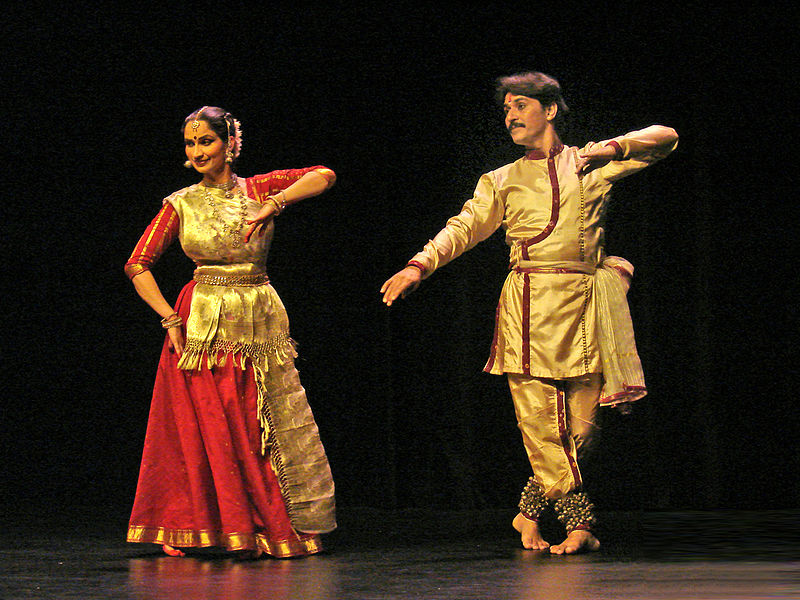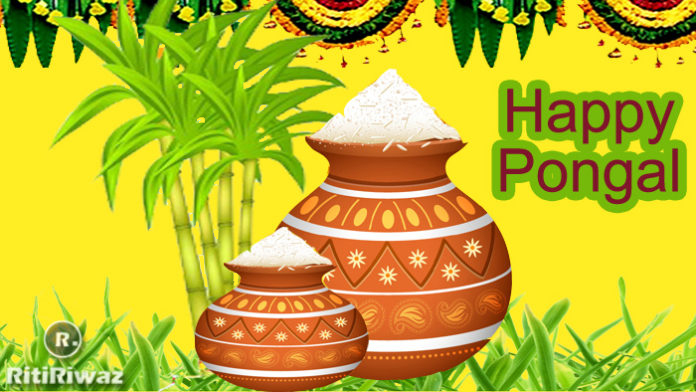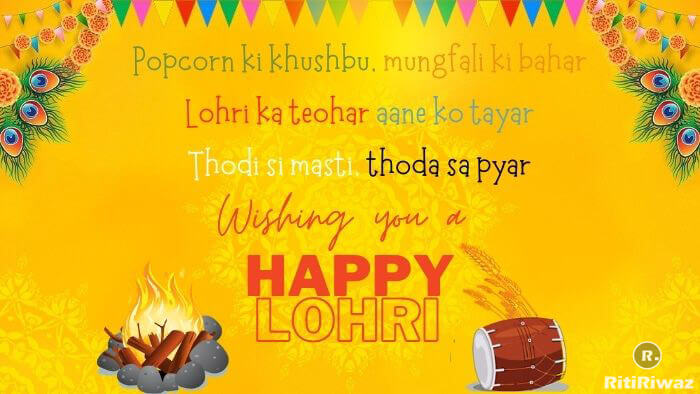Kathak – Classical Dance Style Of North India

Kathak, northern India’s most popular dance form, originated in the Indo-Gangetic plains. This text provides an overview of the form, incorporating information on its origin and salient features. Tracing its over 2000-year-old history, it answers many of the questions that frequently plague interested viewers as well as connoisseurs.
The word Kathak is derived from Katha, meaning “a story“, and hence the word Kathak means a storyteller who recounted mythological tales in the temples and danced them in a state of ecstasy.
Origin
Having its origin in the sacred text known as the Natya Shastra, set to be divinely inspired through the sage Bharata, it has become one of the most comprehensive and expressive languages of movement in the world.
With the advent of the Mogul rule in India (11th-18th centuries), it was transformed from a temple dance to court dance and became brilliant entertainment. It was recognized in its innovative aspect by the Mogul emperors, especially the poet-king Wajid Ali Shah who rescued it from oblivion, lent it dignity, and founded the famed Lucknow Gharana.
This dance form depicts “life” and is based on the philosophy of the trinity – creation (Brahma), preservation (Vishnu), and destruction (Mahesh). Its poses are seldom static and it has a continuous flow of movements very near to life. Equal stress is laid on intricate footwork and the beauty of expression. It is two-dimensional in character; it conceives the space basically in straight lines and does not put emphasis on giving a three-dimensional effect. The human form is conceived as a straight line and there are very few deviations from the vertical median.
Kathak has three main sections –
- The invocation,
- One pure (abstract) dance recital
- One expressive dance.
The invocation (Vandana) consists of the dancer coming to the stage and offering respect to his or her guru and the musicians on the stage. The pure dance is called a nritta, while the expressive dance is called a nritya.
Kathak can be divided into nritta and abhinayaon on the one hand and tandava and lasya on the other. Nritta and abhinaya are applicable to the movements in the dance style. Tandava and lasya have to do with the type of numerics that are played on the tabla or executed by the feet.
Kathak is unique for its Footworks and Circles. It is for both males and females.
Kathak is usually danced with the following:
(Kathak has a very wide range/variety)
1. Slokas (Sanskrit / Hindi) and Bhajans (devotional songs for Hindu Gods and Goddesses). Please see the Lyrics of Bhajans.
2. Classical and Light Classical Songs e.g. Thumri, Dadra, Kajri, Hori.
3. Film songs preferably based on Ragas
4. Darbari and Ghazals (mainly Urdu) – songs based on love, admiration, infatuation, separation, etc. For examples of Ghazals, you may see Ghazals of Mirza Ghalib. You may consult the English-Urdu Dictionary.
5. Pure Classical type e.g. Paran, Tukda, Gat Nikas, Jugalbandi (a friendly competition), Sawal-Jawab (footwork with tabla or pakhawaj), and demonstration of different Beats. You may consult Taalmala.
6. Tarana based on different Ragas.
Please scroll below to see the definitions and links related to Kathak.
7. Songs were written by Ravindra Nath Tagore and Kazi Nazrul Islam (Bengali)
8. Folk Dances from different states of India e.g. Bhangra, Dandia, Garba, Machua, Chhau, etc., and also gypsy dance. They have a unique style but they can be blended with Kathak.
9. Dance Dramas (mainly Hindi) For example, topics are chosen from the epic Mahabharata which was composed by Vyas Deva and describes the story of the Vedic era. The other great composition is the epic called Ramayana written by Valmiki. It describes the story of Rama (a representative of God Vishnu), the king of Ayodhya. Rama’s wife Sita was abducted by Ravana, the demon king of Sri Lanka. Rama fought a war against Ravana and defeated him. Ramayana presents the ideology of King Rama and his love for his country; Shakuntala, Krishnaleela, etc.
10. Any musical (classical) composition e.g. Sitar, Sarod, Violin, Sarangi, Israj, Dilruba (String instruments), Sehnai, Flute (Wind instruments) and Tabla, Pakhawaj, Naal, Dholak (Percussion instruments) based on an ancient (as #9) or modern theme (preferably on India).
11. Kathak (especially footwork) can be blended with Tap dancing
Basic Footwork: Right and Left feet are stamped as follows using Keharwa (An eight-count beat).
1 2 3 4
Ta Thei Thei Ta Bol/Phrase
Right Left Right Left
5 6 7 8
Ta Thei Thei Ta
Left Right Left Right
Types of Circles: Static, Dynamic, Sitting circles.
Navras of Kathak: Nine Sentiments (expression/acting)
1. Shant – Quiet
2. Veer – Hero
3. Krodh – Anger
4. Adbhut – Surprise
5. Vibhastsya – Disgust
6. Karun – Pathos
7. Hasya – Comedy
8. Bhaye – Fear
9. Shringar – Beauty
Hand Gestures of Kathak:
Asanjukta Hasta Mudra (Single Handed Gestures)
Sanjukta Hasta Mudra (Combined Handed Gestures)
Gat Nikas:
A composition describing the movement of a bird (e.g. peacock, swan), animal (e.g. elephant, lion), a human character or Hindu Gods and Goddesses, and is usually performed with the beats of a percussion instrument accompanied by string instruments e.g. Sarangi, Sitar, Swarmandal, etc. Gat Nikas, commonly called Gat Vab, is named as follows.
-
Parvati Gat – the movement of Hindu Goddess Parvati (Goddess of strength)
-
Stri Gat – the movement of a lady
-
Mayur Gat – the movement of a peacock
-
Gajagamini Gat – the movement of an elephant
-
There are many other Gats e.g. Ghunghat (veil), Holi (festival of colors), Lahenga (a Hindu dress or costume), Selami (a Muslim way of salutation to the audience), etc. There are variations in eye, neck, feet movements.
Amad –
It means arrival or appearance on the stage. The Tukda following the Hindu way of greeting the audience by doing Namaste is called Amad.
Selami –
At the beginning of the Kathak dance, the way of salutation to the audience according to the Muslim culture is called Selami.
Tukda –
The Bol / Phrase has one or more Avartan (one cycle depending on beats).
Paran –
Bols / Phrases recited with the rhythm of Pakhawaj (a percussion instrument). It can be of many kinds, e.g. Bol Paran, Jati Paran, Ghungru (bells) Paran, Pakshi (bird) Paran. Also Ganesh Paran, Kali Paran, Lakhsmi Paran (by the name of the Hindu Gods and Goddesses), etc.
Tarana –
It is usually sung by Chota Kheyal (consult Ragmala). It is composed of meaningless words or phrases e.g. ‘Tana Dere Na Dim’, ‘Na Der Dani Ni’, ‘Tom Tana Na’, ‘Udanita Nana Der Der’ etc. Tarana composition is the hardest one in Kathak. It needs a clear conception of everything e.g. footwork, beat theory, circles, tukda, paran, etc. It is usually accompanied by Tabla and can be performed in any Raga. It is fast and rhythmic, hence easily enchanting the audience.
Costumes
Kathak is a wonderful blend of Hindu and Muslim culture. The costumes are very gorgeous for both Hindu (Lehenga-Choli) and Muslim – (Churidar-Kameez-Vest) called Angrakha.
Suggested Read: Regional Folk Dances of India






